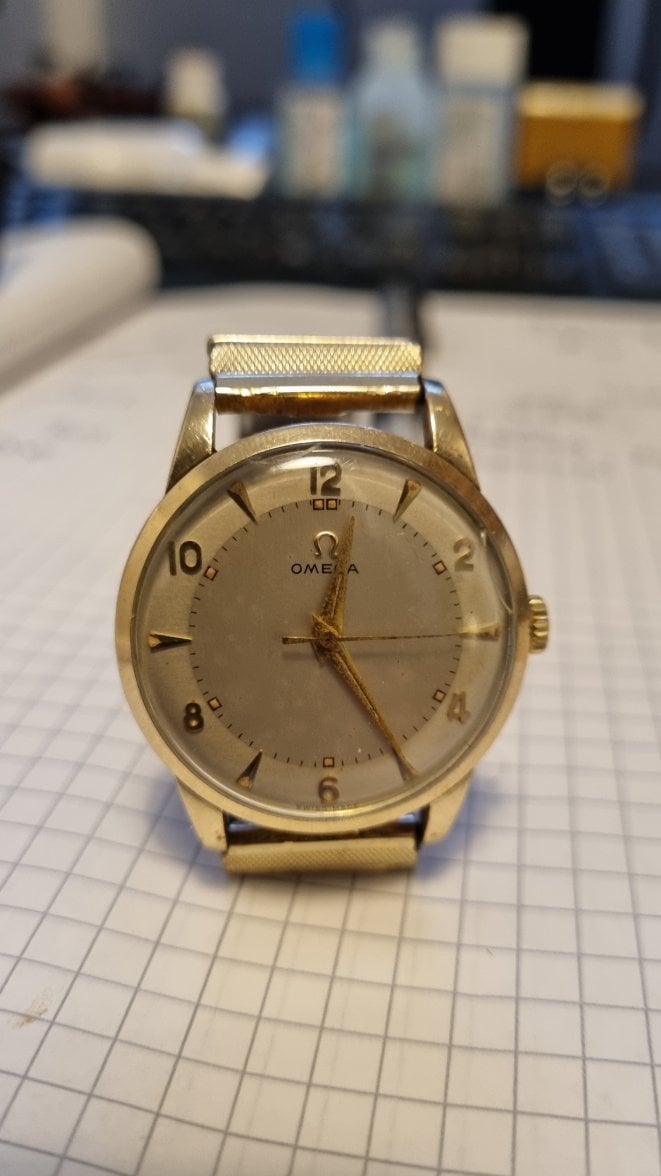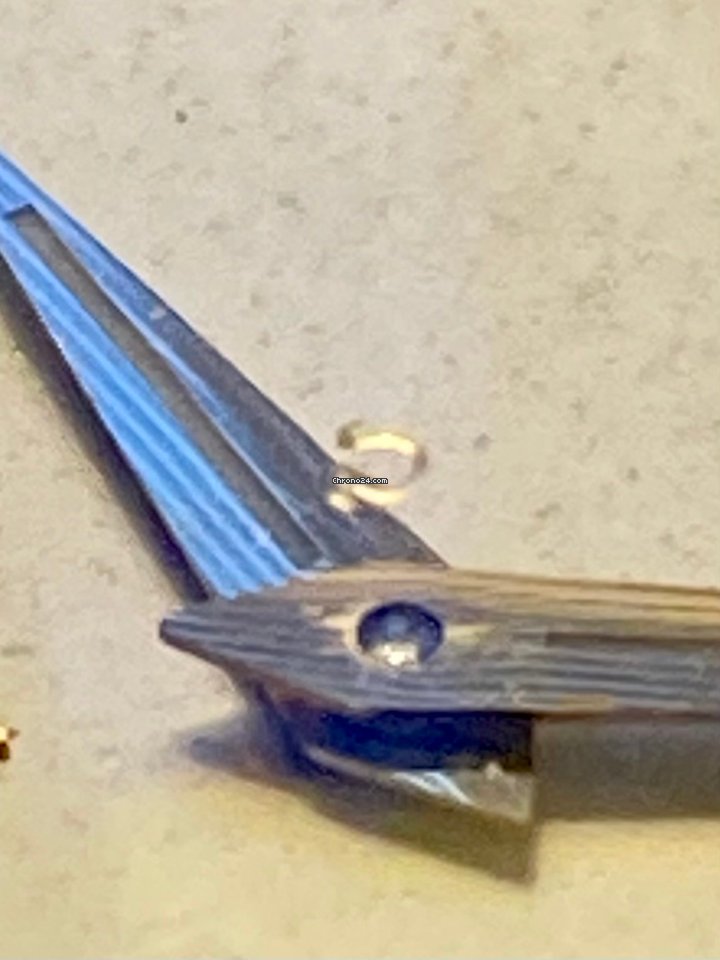- Posts
- 4
- Likes
- 2
Poth
·Hi Everyone,
I'm looking for some help identifying the style/type for this Omega.
We were clearing out my Wifes house yesterday and came across her Dads watch which was put in a box 15 years ago when he passed away. Only yesterday did we find it was an old Omega. I've scoured the internet to see if I could find another the same but no joy. Similar but not the same!. Just for information really, to know more about it. We will be putting a leather strap on to replace the expanding Bracelet!
My wife want to wear it as a special memento of her Father.
Looks to be 34mm case Circa 1952?
Inside back:- Plaque OR 80 Microns, Case type 2513-12SC. Push fit back
Movement (which is immaculate) Calibre 283, SN 13890354, 17 Jewels
On another side note I notice a extremely fine hand engraving almost impossible to see by the eye alone...looks to be 6E52674 does this mean anything?
Also who would you recommend for straps?
Many thanks in advance
I'm looking for some help identifying the style/type for this Omega.
We were clearing out my Wifes house yesterday and came across her Dads watch which was put in a box 15 years ago when he passed away. Only yesterday did we find it was an old Omega. I've scoured the internet to see if I could find another the same but no joy. Similar but not the same!. Just for information really, to know more about it. We will be putting a leather strap on to replace the expanding Bracelet!
My wife want to wear it as a special memento of her Father.
Looks to be 34mm case Circa 1952?
Inside back:- Plaque OR 80 Microns, Case type 2513-12SC. Push fit back
Movement (which is immaculate) Calibre 283, SN 13890354, 17 Jewels
On another side note I notice a extremely fine hand engraving almost impossible to see by the eye alone...looks to be 6E52674 does this mean anything?
Also who would you recommend for straps?
Many thanks in advance

